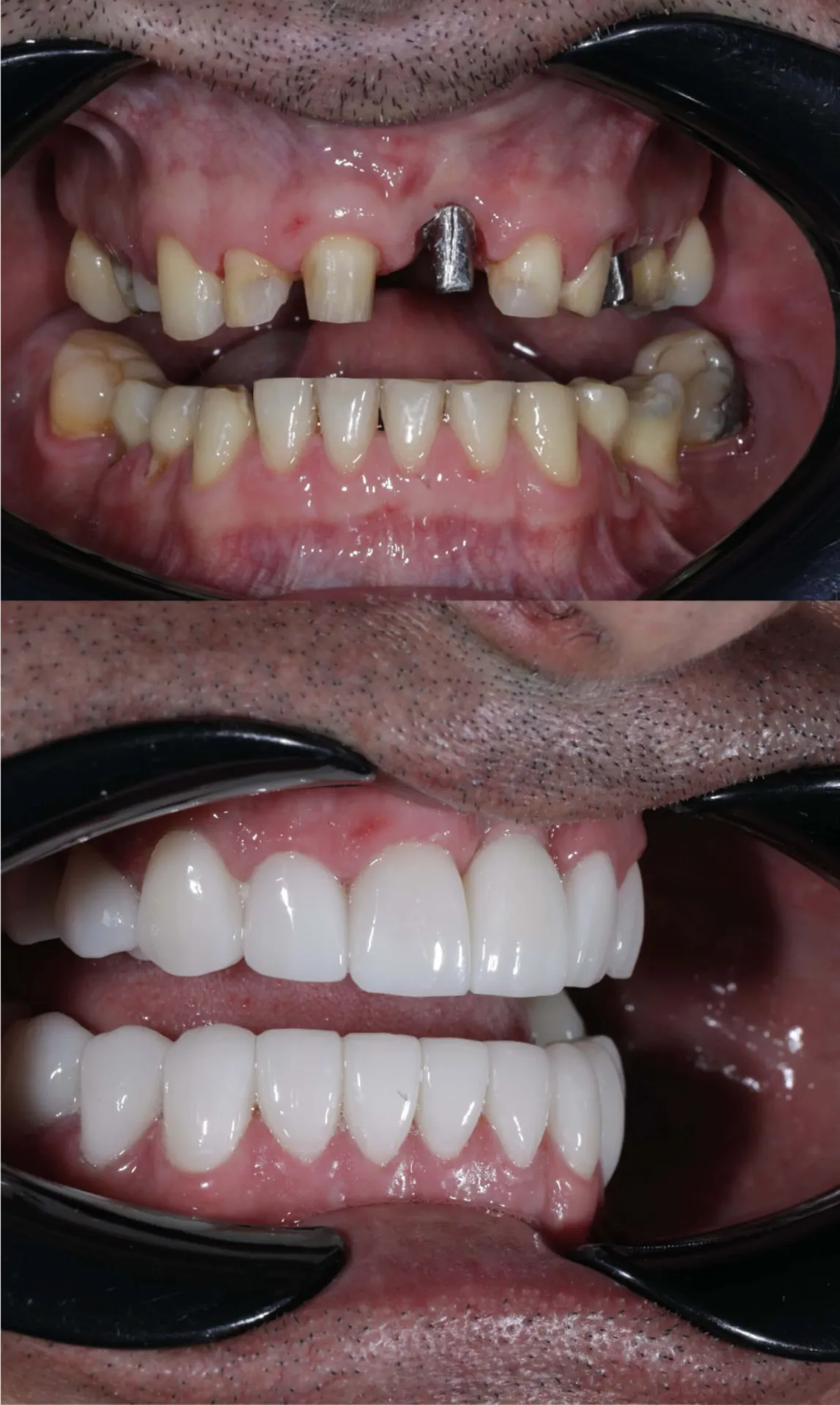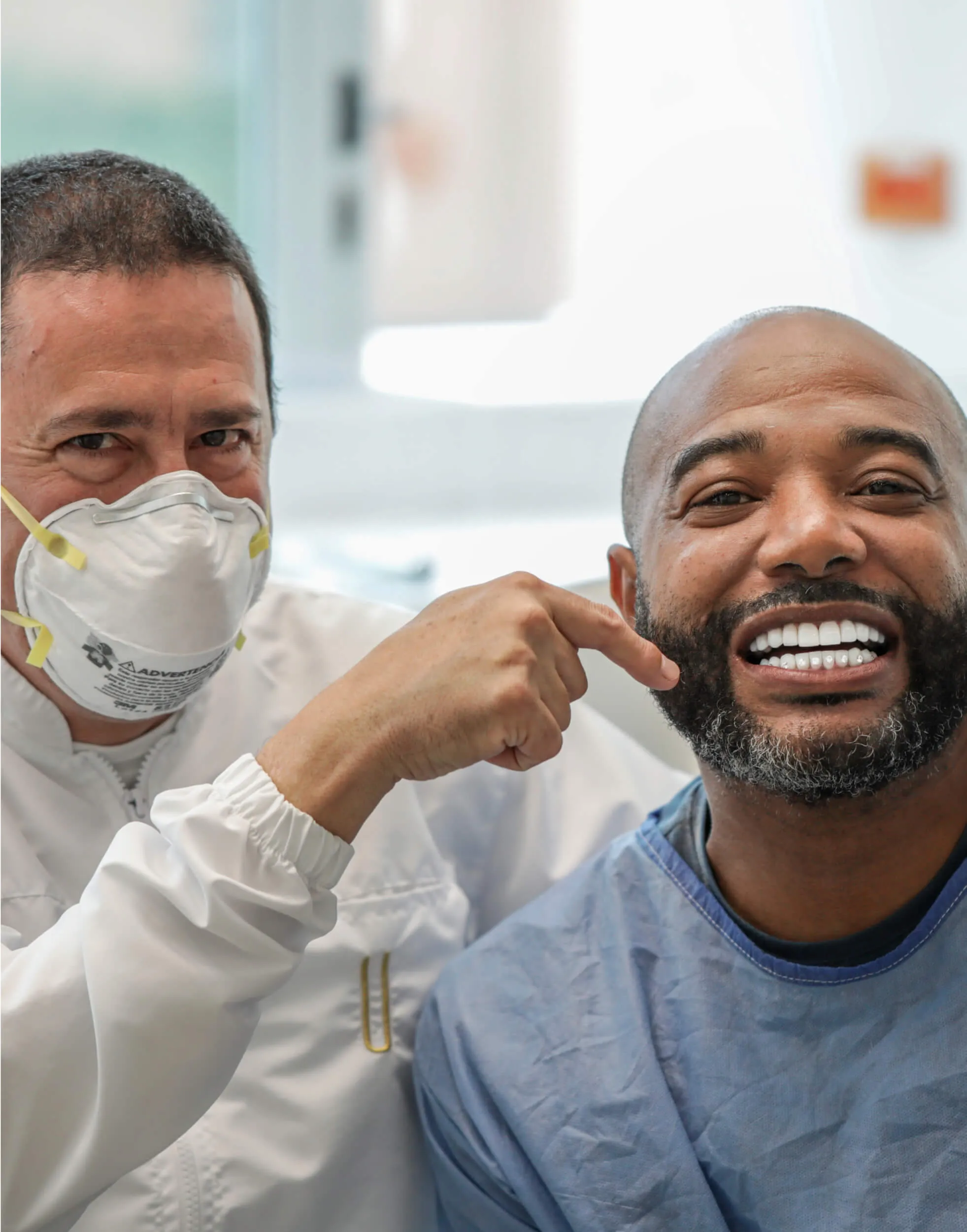
Oral Rehabilitation
Unilaser employs an interdisciplinary team of specialists to restore function, aesthetics, and harmony to your smile. Oral rehabilitation in Medellín, Colombia will help you get the radiant smile you deserve. Our team is ready to meet your demands in a tailored manner while using cutting-edge technology to improve your smile and make you seem dazzling.
Oral rehabilitation therapies, such as crowns, bridges, and prostheses on teeth or implants, can help those who have lost teeth or have considerable wear or destruction on them.
What is oral rehabilitation?
Also known as dental rehabilitation, it is a comprehensive dental approach that seeks to restore the health, functionality and aesthetics of the smile.
At Unilaser we are experts in oral rehabilitation and our patients attest to the meticulous work carried out by our dental professionals. They pay close attention to the first examinations or check-ups performed on the patient, as they understand that each particular case will have a different dental rehabilitation.

How is Oral rehabilitation done?
Our oral rehabilitation process begins with a complete examination and evaluation by an expert rehabilitation dentist.
Depending on the case, may include:
Porcelain crowns
This may include crowns, bridges or dental implants to repair or replace damaged or missing teeth.
Bridges or fixed prostheses
They are porcelain crowns, which are joined together to replace one or more missing teeth or where there are large spaces. These crowns are cemented to the dental roots or on implants.
Removable prostheses
In some cases, orthodontic treatment may be necessary to correct misaligned teeth or jaw discrepancies, improving bite and alignment in general.
Mixed prostheses
This specialty focuses on the design and placement of artificial teeth or dental prosthetics, such as dentures, dental bridges, or restorations.
Overdentures or implant-supported prostheses
Root canal therapy can be performed to treat damaged or infected dental pulp and save natural teeth.
Complete or total prostheses
Surgical procedures, such as tooth extractions, bone grafts, or jaw surgery, may be required as part of the oral rehabilitation process.
Prótesis Inmediatas
These are prostheses are placed immediately after a tooth extraction, provisionally, while the definitive prosthesis is made or the healing and osseointegration process of the implants finishes.
Hybrid prostheses
They are total or partial prostheses that are permanently placed in the mouth, on at least four implants in the lower arch and five or six implants in the upper arch. They are indicated for patients with total or partial absence of teeth, bone and gum. They are characterized by replacing missing teeth and gums, in order to support the lower and upper lip and restore harmony to the smile.
The goal of oral rehabilitation is to restore the patient’s oral function, improve the aesthetics of their smile, and their overall oral health and well-being.
We carry out virtual consultations anywhere in the world, wherever you are. Live the experience of having a smile the UNILASER style
When is oral rehabilitation needed?
Oral rehabilitation is needed when teeth have been lost, have extensive wear or significant destruction, which are compromising oral, chewing or aesthetic health. That is why there will be a great diversity of scenarios where dental rehabilitation procedures will be required with different solutions for each patient.

Oral rehabilitation
Below you can see the before and after of we have performed at Unilaser
Frequently asked questions in Oral Rehabilitation
What type of crown is indicated in my case?
This depends on several factors, such as the location of the tooth, the extent of damage, aesthetic considerations, and your personal preferences. The type of crown also varies depending on the material decided to use for a specific case.
What if I have a stained or dark tooth?
If you have a stained or darker tooth, zirconia crowns are more resistant and have low translucency. This allows masking the tooth color defects and the cores, posts or bolts placed on the dental roots or the connections (abutments) of the implants.
If I need a crown in an anterior tooth, which one will be the ideal one?
We recommend all-porcelain crowns in either lithium disilicate or zirconia to restore anterior teeth as these crowns provide a completely natural appearance. However, if there is a tooth that is darker than the others, we recommend Zirconium crowns.
What is the approximate duration of a crown?
This can vary depending on multiple factors, including the type of crown, dental hygiene habits and others. On average a well taken care of crown can las between 10 to 20 years.
If I’m going to change a crown, is it necessary to have a root canal?
What is recommended by the American Society of Endodontics is that if a tooth has had a previous crown, an endodontic treatment should be performed if the crown is to be changed again, because the cements produce acidity in the tooth that was previously carved and is weakened. This acidity can affect the nerve of the tooth. If you do not have a root canal, pulp necrosis may occur after the new crown is cemented and the new crown will probably have to be removed to perform the root canal or drill it, losing resistance.
We carry out virtual consultations anywhere in the world, wherever you are. Live the experience of having a smile the UNILASER style
